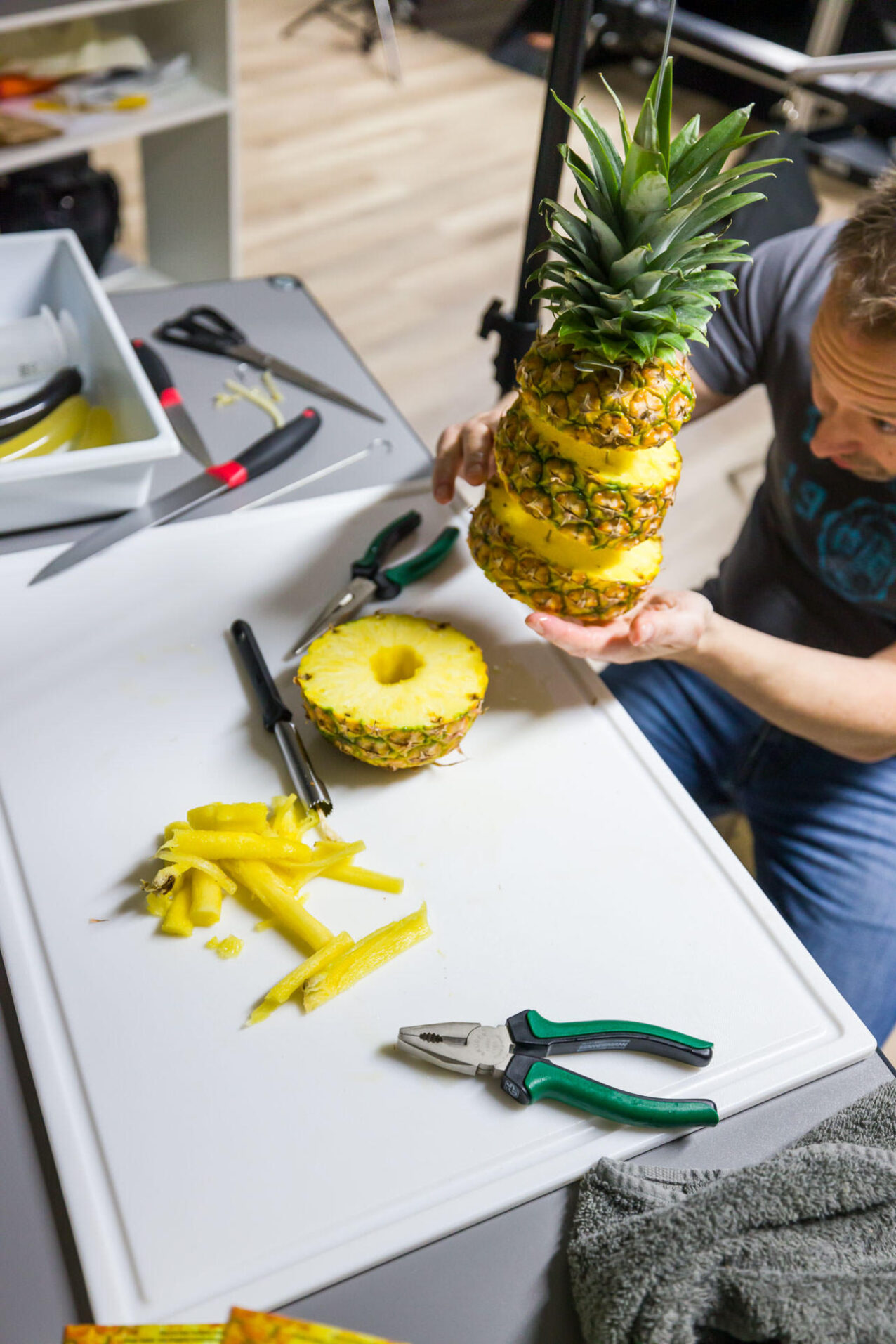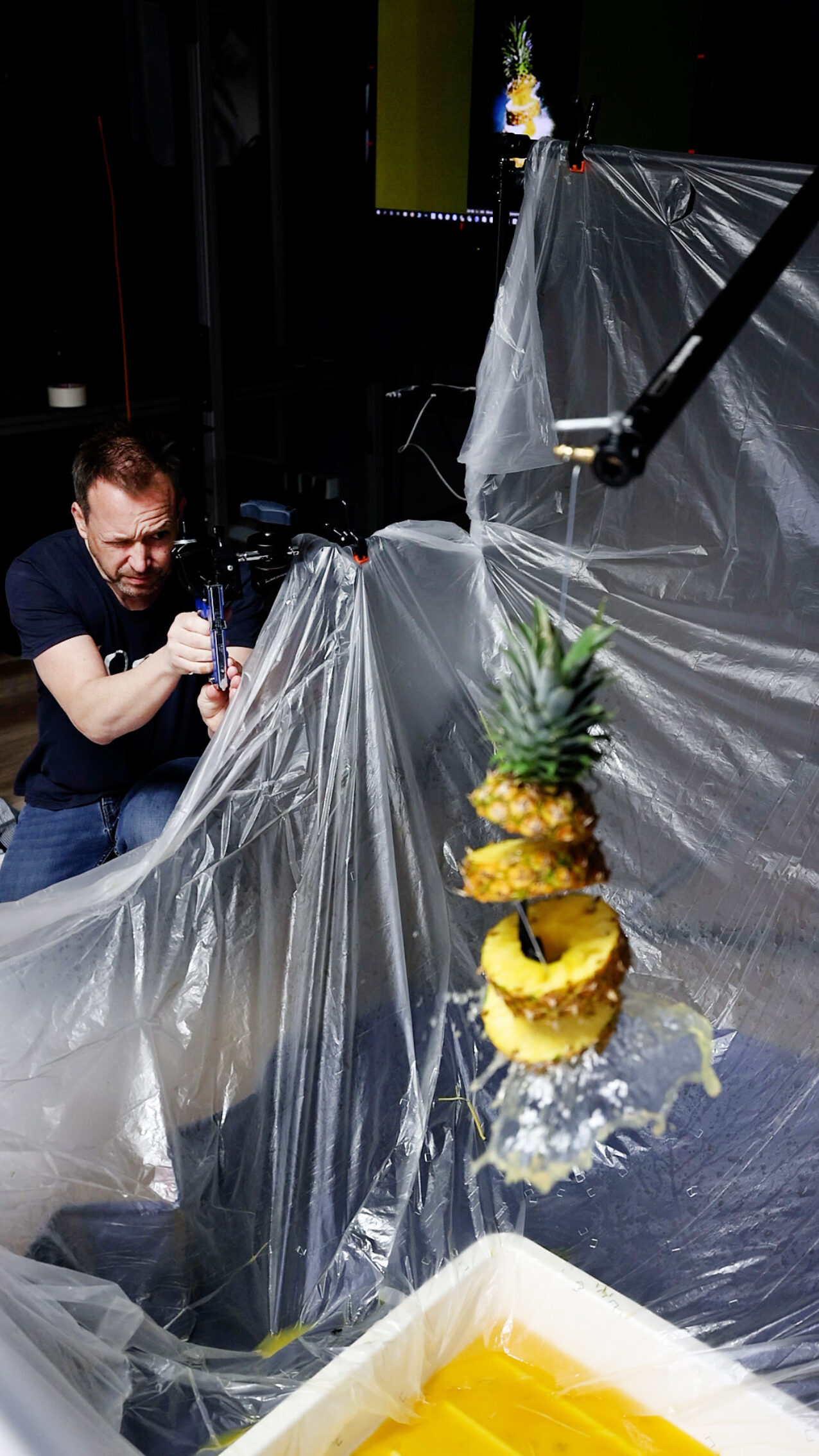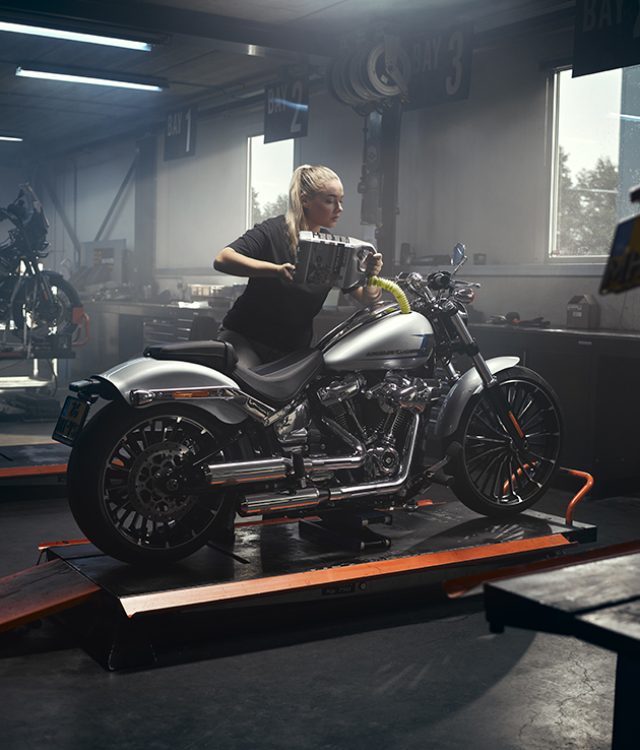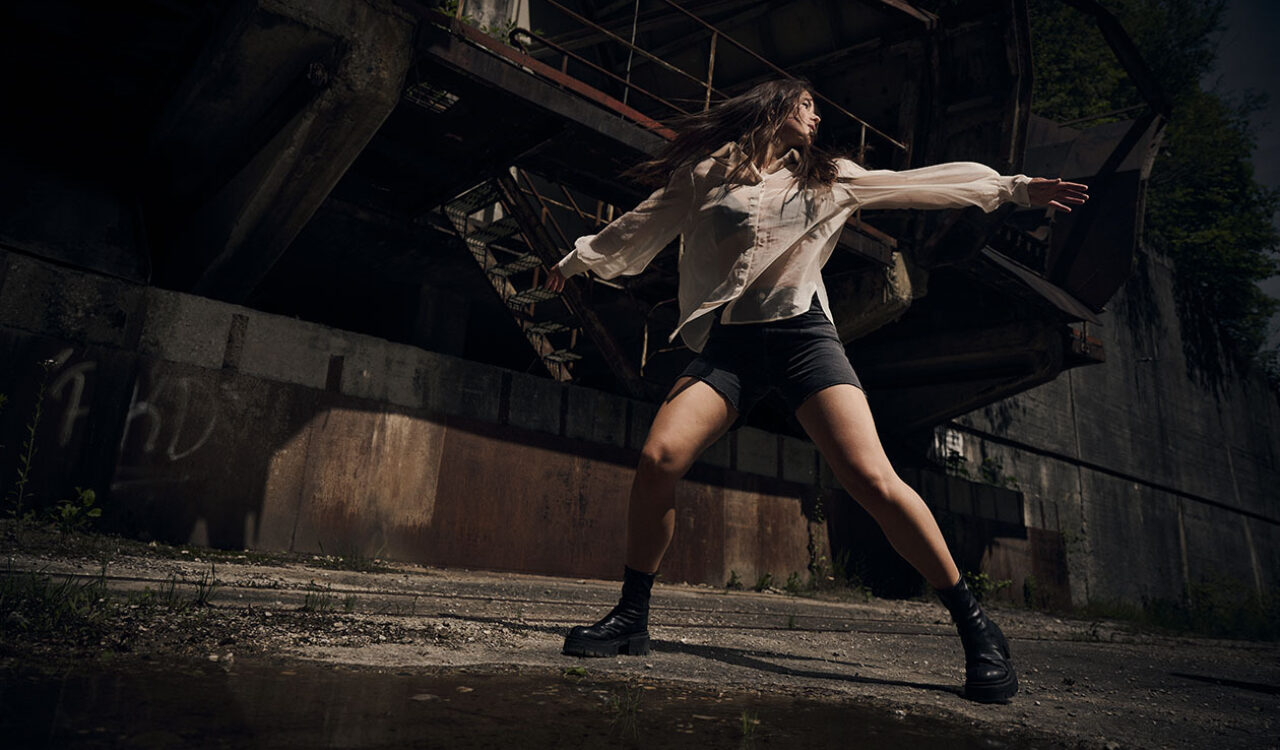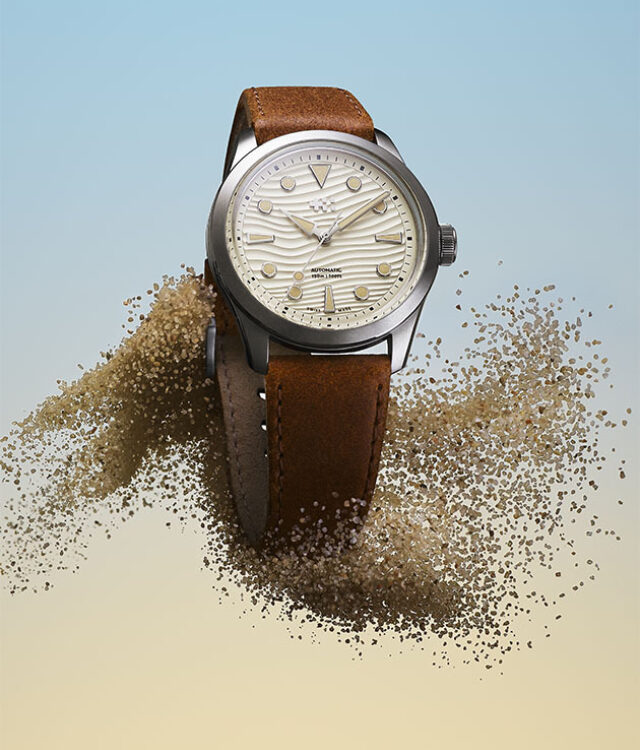Under the working title "Juicy Fruit" I created my latest series in the field of "splash photography". My goal: fruit in which the juice or liquid literally explodes out. A simple splash, as it is usually done and where the liquids are thrown at the object from the outside, was too boring and hackneyed for me. That has been done already much too often.
But: how do you implement the "exploding from the inside out" then?

Technical implementation
The solution was quite simple. One uses the well-known balloon, which is filled with the liquid, and lets it burst.
To be able to control the result at least to some extent, the decisive factor is the triggering of the camera or the flash. Here, a few milliseconds plus/minus decide the result. Without technical aids this is hardly solvable. I achieved the bursting of the balloon by means of staples, which I shot with a commercial stapler. A big advantage of the staples compared to a needle is the saving of retouching work and you can act with distance, which makes the light setting easier. The disadvantage, however, is that not every staple hits, so I shot quite a few staples in the 4 days of production.
For the synchronization of the flash I used a sound trigger. This was directly connected to the power packs via sync cable. The camera was set to an exposure time of 2 seconds and then triggered during this time. Due to the darkened room, the image was also ultimately exposed only by the flash. During my first attempts I thought I could just trigger the camera directly, but the delay of the camera is just too long and so you have less to no leeway for the exact time of triggering.

The Light
Crucial to the success of this project was the fast flash duration of the broncolor power packs, without which these results would not have been possible. The pictures live exactly from these sharply captured drops.
The lighting setup was quite simple. A main light from the front and a backlight to make the mist of the droplets visible. For the melon, I used my Para 88 for this, which provides a very directional sharp light despite its size. For the smaller fruit, a standard reflector P70 with honeycomb was enough for me. For the backlighting, I also used the P70 with honeycomb for the melon and the PAR reflector for the other images, which offers a bit more bite and brilliance than the standard reflector. The background was illuminated in each case with P70 and honeycomb.








